The Architectural Marvels of Gyantse Pelkor Chode Monastery: A Must-See in Tibet
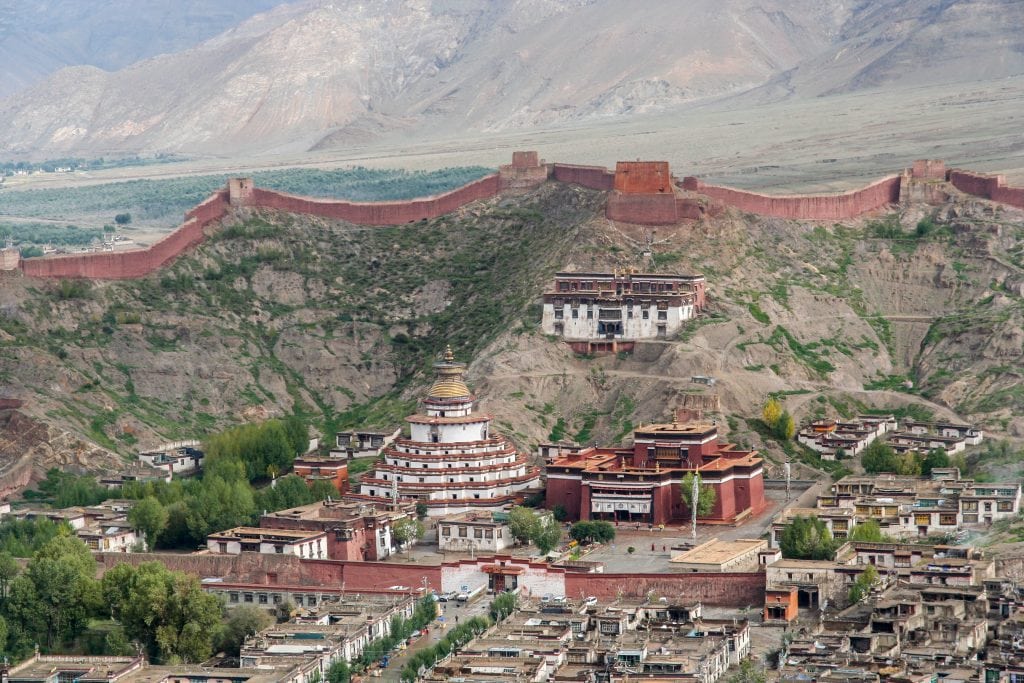
An Essential Guide to Visiting Gyantse Pelkor Chode Monastery
Nestled in the scenic landscapes of western Tibet, Gyantse Pelkor Chode Monastery stands as a testament to the rich tapestry of Tibetan Buddhism, art, and history. This remarkable complex, also known as Palcho Monastery, is not just an architectural marvel; it represents the confluence of three major schools of Tibetan Buddhism—Sakya, Gelug, and Kadam—within its hallowed walls. Visitors are drawn to its iconic Kumbum Stupa, a towering structure adorned with intricate chapels that encapsulate the spiritual journey of enlightenment.
As you wander through the monastery’s serene corridors, you’ll be captivated by the stunning murals and ancient relics that tell the stories of centuries past. From the exquisite craftsmanship of the Tsulaklakang Monastery to the vibrant scenes of the Saga Dawa Festival, every corner of Pelkor Chode offers a glimpse into the profound traditions that have shaped Tibetan culture.
Whether you’re a seasoned traveler or a first-time visitor to Tibet, Gyantse Pelkor Chode Monastery promises an enriching experience that blends spirituality with history. Prepare to be transported to a world where faith and artistry intertwine, leaving you with memories that will linger long after your visit.
In This Guide
- An Essential Guide to Visiting Gyantse Pelkor Chode Monastery
- The Rich History and Legends of Gyantse Pelkor Chode Monastery
- Main Highlights: What You Absolutely Can’t Miss
- Planning Your Visit: A Practical Guide
- Tickets: Prices, Booking, and Tips
- How to Get There: A Complete Transportation Guide
- Local Cuisine and Accommodation Nearby
- Frequently Asked Questions
- Final Thoughts on Your Trip
The Rich History and Legends of Gyantse Pelkor Chode Monastery
Nestled in the picturesque Gyantse Valley, the Pelkor Chode Monastery, also known as Palcho Monastery, is a treasure trove of Tibetan culture and history, rich in legends that resonate through its ancient walls. Established in the 14th century, the monastery is not only a remarkable architectural feat but also a testament to the enduring legacy of Tibetan Buddhism.
The roots of Pelkor Chode trace back to the 9th century, with historical references to Pelkhor-Tsen, the son of the last Tibetan king, Langdharma, who sought to revive the Yarlung dynasty. His efforts to rebuild a Buddhist stronghold in the region marked the genesis of what would eventually become a revered monastic complex. The actual construction of the monastery began during the 14th and 15th centuries, under the auspices of the Sakya sect, which was then the most influential Buddhist school in Tibet. Throughout these centuries, the monastery flourished, leading to the creation of multiple halls, temples, and the iconic Kumbum Stupa, a unique structure that is the only one of its kind in Tibet.
The Kumbum Stupa rises majestically to 32 meters, embodying the essence of spiritual enlightenment through its intricate design, which features nine tiers of chapels filled with thousands of Buddha images. This architectural marvel not only serves as a focal point for pilgrims but also encapsulates the very principles of Tibetan Buddhism, portraying the path to enlightenment in a three-dimensional Mandala form.
As time passed, Pelkor Chode evolved into a remarkable confluence of different Buddhist traditions, housing three major schools: Sakya, Gelug, and Kadam. The influence of the Gelug sect grew stronger over the years, particularly after the decline of Sakya, resulting in the establishment of additional colleges and hermitages within the monastery grounds. By the end of the 17th century, Pelkor Chode boasted 16 colleges, each contributing to the rich tapestry of learning and spiritual practice that characterized the monastery.
Despite its glory, the monastery has faced significant challenges throughout its history. In 1904, British forces attacked Pelkor Chode, leaving scars that are still visible today in the form of bullet holes in its ancient walls. Once home to over 1,500 monks, the number has dwindled to fewer than 80 permanent residents, a stark reminder of the tumultuous events that have shaped this sacred site.
Amidst its storied past, Pelkor Chode also serves as a vibrant hub for cultural festivities. The Saga Dawa Festival, which commemorates the birth, enlightenment, and death of Sakyamuni Buddha, draws pilgrims from across Tibet, showcasing the enduring spiritual significance of the monastery. During this festival, the air fills with the sounds of chanting lamas, and the community gathers to honor their shared heritage.
Visitors to Pelkor Chode are not merely stepping into a historical site; they are entering a living testament to the resilience of Tibetan culture and the enduring power of faith. With its rich history, stunning architecture, and vibrant traditions, Pelkor Chode Monastery invites those who seek to understand the heart of Tibetan Buddhism and its profound impact on the region’s identity.
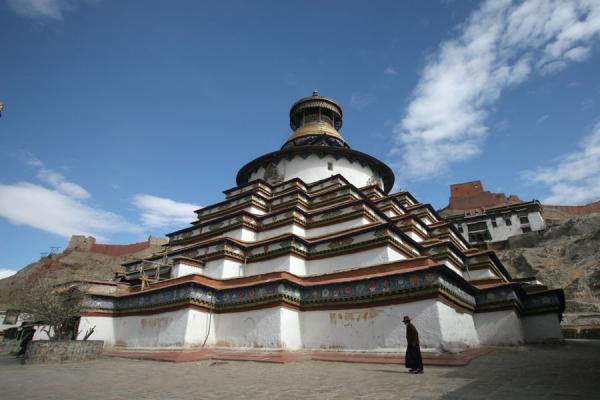
Gyantse Pelkor Chode Monastery.
Main Highlights: What You Absolutely Can’t Miss
When visiting Gyantse Pelkor Chode Monastery, there are several key highlights that you absolutely cannot miss. This stunning site, steeped in history and spiritual significance, offers a unique glimpse into the rich tapestry of Tibetan Buddhism. Here’s what to look out for during your visit:
The Majestic Gyantse Kumbum Stupa
One of the monastery’s most iconic features is the Gyantse Kumbum, standing at an impressive 32 meters tall. This stupa is unique in Tibet, characterized by its nine tiers, each housing chapels filled with intricate Buddhist iconography. As you ascend through the tiers, you’ll experience a spiritual journey that represents the path to enlightenment. Don’t forget to admire the famous Eyes of Buddha, painted on the exterior of the stupa, which symbolize watchfulness and compassion.
Tsulaklakang Monastery: The Heart of Pelkor Chode
The Tsulaklakang Monastery serves as the main temple within the complex. Its three floors are adorned with stunning murals and relics from the 15th century. The ground floor features the Four Guardian Kings, leading you into the expansive Assembly Hall (Tshomchen), which boasts 48 intricately carved pillars and a plethora of thangkas depicting the deities of the Sakya tradition. Be sure to visit the Main Chapel, where a colossal bronze statue of Sakyamuni Buddha resides, surrounded by figures representing the different Buddhas.
The Intricate Murals
As you explore the monastery, take a moment to appreciate the murals that adorn every chapel and building. These artworks showcase themes of both Esoteric and Exoteric Buddhism, illustrating important teachings and historical figures. The murals are not just decorative; they offer insights into the rich spiritual heritage of the region.
The Residential Quarters: Zhacangs
The Zhacangs, or residential quarters, reflect the monastery’s diverse Buddhist traditions. Each sect—Sakyapa, Kadampa, and Gelugpa—has its own living area, showcasing the harmonious coexistence of these schools within the monastery. Although only three quarters remain, they provide a glimpse into the daily lives of the monks who once filled the complex.
Festivals and Rituals
If your visit coincides with the Saga Dawa Festival, make sure to participate. This important celebration honors the birth, enlightenment, and death of Sakyamuni Buddha. The atmosphere is electric as over 500 lamas gather to chant sutras and perform rituals, drawing pilgrims from across Tibet. It’s a profound experience that encapsulates the spirit of Tibetan Buddhism.
Nearby Attractions
Don’t limit your exploration to just the monastery. Venture out to Gyantse Fort (Gyantse Dzong), perched on a hill overlooking the town. This ancient fortress offers sweeping views and a sense of the area’s historical significance. Additionally, visit Pala Manor, a well-preserved estate that illustrates the region’s feudal past and the stark contrast between noble life and the hardships of serfdom.
The Old Town of Gyantse
Finally, take a stroll through the old streets of Gyantse, where the charm of traditional Tibetan life remains intact. The narrow, winding lanes are dotted with local markets and the occasional horse or yak. This area is perfect for finding unique souvenirs and immersing yourself in the local culture.
Visiting Gyantse Pelkor Chode Monastery is not just a journey through stunning architecture and art; it’s an opportunity to connect with the spiritual heart of Tibet. Be sure to set aside ample time to fully absorb the beauty and significance of this remarkable place.
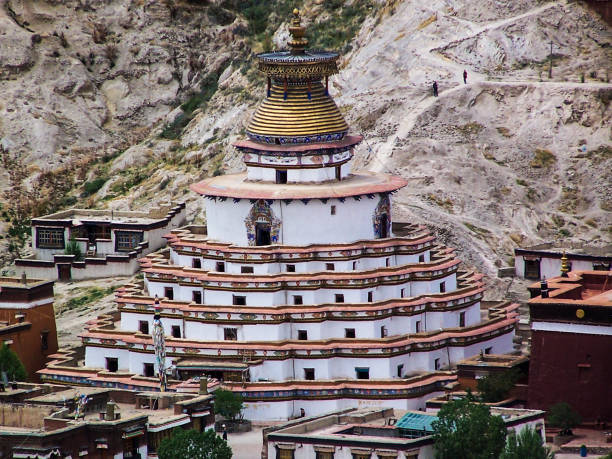
Gyantse Pelkor Chode Monastery.
Planning Your Visit: A Practical Guide
Your Comprehensive Guide to Visiting Gyantse Pelkor Chode Monastery
Visiting Gyantse Pelkor Chode Monastery (江孜白居寺) is a journey into the heart of Tibetan Buddhism, rich in culture, history, and breathtaking architecture. To ensure you make the most of your visit, here’s a practical guide that will help you plan your trip effectively.
Getting There
Location
Pelkor Chode Monastery is situated in Gyantse Town, approximately 100 kilometers southeast of Shigatse city in Tibet. The monastery is easily accessible by road.
Transportation Options
– By Bus: Regular buses run from Lhasa and Shigatse to Gyantse. The journey from Lhasa typically takes about 6-7 hours, while from Shigatse, it’s around 2-3 hours.
– By Private Car: Hiring a private car or joining a tour can provide a more comfortable and flexible experience, allowing you to stop and explore along the way.
Required Permits
Traveling to Tibet requires special permits. Ensure you obtain a Tibet Travel Permit, which can be arranged through a travel agency. Additionally, if your itinerary includes a visit to restricted areas, further permits may be needed.
Best Time to Visit
The ideal time to visit Pelkor Chode Monastery is during the spring (April to June) and autumn (September to October) months when the weather is pleasant and the natural scenery is at its best. Avoid visiting during the winter months, as temperatures can drop significantly.
What to Expect
Entry Fees
A nominal entrance fee is typically required to explore the monastery complex. It’s advisable to carry cash, as card payments may not be accepted.
Dress Code
As a sacred site, visitors are expected to dress modestly. Ensure your shoulders and knees are covered. Comfortable footwear is recommended, as you will be exploring various levels of the monastery.
Key Highlights to Explore
- Kumbum Stupa: The highlight of the monastery, standing at 32 meters tall, is renowned for its intricate architecture and numerous chapels that depict the path to spiritual enlightenment.
- Tsulaklakang Monastery: Home to stunning murals and a large bronze statue of Sakyamuni Buddha, this temple is a must-see.
- Residential Quarters (Zhacangs): Explore the residential areas of the monks representing the three Buddhist sects present in the monastery.
Nearby Attractions
While in Gyantse, take time to explore these nearby sites:
- Gyantse Fort (Gyantse Dzong): Offering panoramic views of the town and surrounding countryside, this historic fortress is a short hike from the monastery.
- Pala Manor: A well-preserved serf manor that gives insight into the feudal history of Tibet.
- Old Town Gyantse: Stroll through the narrow streets of the old town, lined with traditional Tibetan houses and bustling local markets.
Accommodation
There are several accommodation options in Gyantse to suit different budgets:
- Guesthouses: For a more authentic experience, consider staying at a local guesthouse. Prices typically range from $20 to $50 per night.
- Hotels: If you prefer more comfort, several hotels offer amenities and services for international travelers.
Practical Tips
- Altitude Adjustment: Gyantse is at an elevation of about 4,000 meters (13,123 feet). Allow time for acclimatization to avoid altitude sickness.
- Local Cuisine: Don’t miss trying local Tibetan dishes such as momos (dumplings) and tsampa (roasted barley flour).
- Respect Local Customs: Always be respectful, especially in sacred spaces. Follow local customs and traditions, such as circumnavigating stupa in a clockwise direction.
Conclusion
Your visit to Gyantse Pelkor Chode Monastery is more than just a sightseeing trip; it’s an opportunity to immerse yourself in the rich cultural and spiritual heritage of Tibet. With this guide, you are well-equipped to explore this unique destination while respecting its traditions and history. Enjoy your journey!
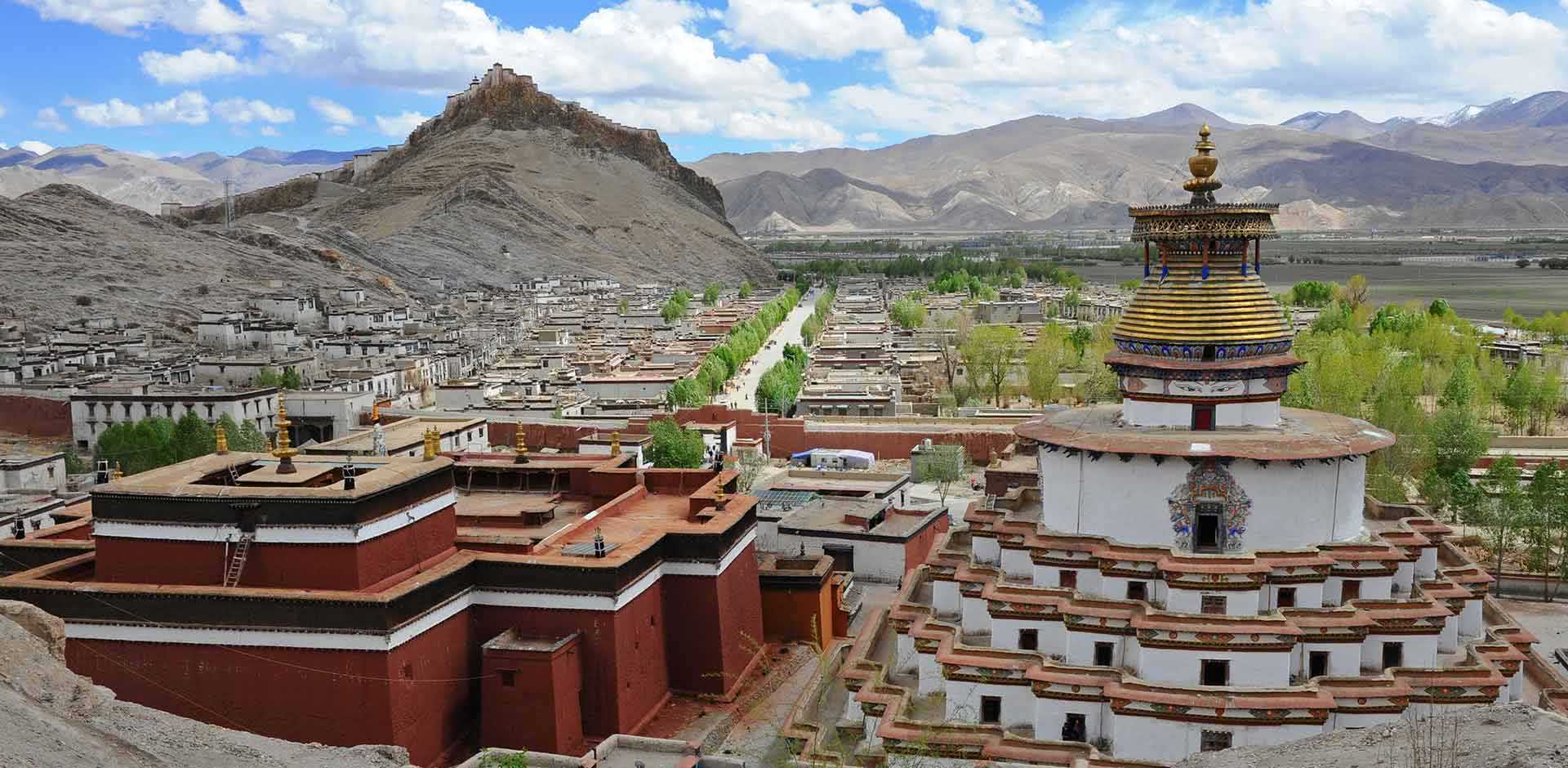
Gyantse Pelkor Chode Monastery.
Tickets: Prices, Booking, and Tips
Visiting Pelkor Chode Monastery, an architectural gem nestled in the heart of Gyantse, is a must for any traveler seeking to immerse themselves in Tibetan culture and history. Here’s everything you need to know about tickets, prices, booking, and some handy tips to enhance your visit.
Ticket Information
Entry Fee:
Visiting Pelkor Chode Monastery comes with a modest entrance fee, typically around ¥30 (approximately $5 USD). This ticket grants you access to the monastery complex and its breathtaking Kumbum Stupa, where you can explore the stunning chapels and admire the intricate murals that adorn the walls.
Booking Options
On-Site Purchase:
Tickets can be purchased at the entrance of the monastery. It’s advisable to arrive early in the day to avoid the crowds and ensure a more serene experience as you explore the sacred spaces.
Guided Tours:
For a deeper understanding of the monastery’s history and significance, consider booking a guided tour. Many local travel agencies in Gyantse offer packages that include the monastery visit along with other nearby attractions like Gyantse Fort and Pala Manor. Prices for these tours vary but generally start around ¥150 (approximately $23 USD) per person.
Tips for Your Visit
-
Best Time to Visit:
The ideal time to visit Pelkor Chode Monastery is during the spring (April to June) and autumn (September to November) months. The weather is mild, making it comfortable for exploration, and the views of the surrounding landscape are particularly stunning during these seasons. -
Dress Appropriately:
As a place of worship, it’s essential to dress modestly. Ensure your shoulders and knees are covered, and avoid overly casual attire. Comfortable shoes are also recommended, as there will be plenty of walking and stair climbing involved. -
Respect Local Customs:
Photography is allowed in most areas, but be respectful and ask permission when taking pictures of monks or locals. Always keep in mind the sacred nature of the site—maintain a quiet demeanor and be respectful of the spiritual practices you may witness. -
Plan for the Altitude:
Gyantse is situated at a high altitude (about 3,950 meters or 12,960 feet). If you’re not acclimatized, take it easy on your first day. Stay hydrated and consider spending a night in Gyantse before visiting the monastery to adjust to the altitude. -
Explore the Surrounding Area:
Don’t miss the chance to explore nearby attractions. Gyantse Fort offers panoramic views of the town and the monastery, while the old streets of Gyantse provide a glimpse into local life and culture.
By planning ahead and keeping these tips in mind, your visit to Pelkor Chode Monastery can be both enriching and unforgettable. Enjoy the serenity and spirituality of this remarkable Tibetan treasure!
How to Get There: A Complete Transportation Guide
Reaching the enchanting Pelkor Chode Monastery in Gyantse offers an exciting opportunity to experience the breathtaking landscapes and rich culture of Tibet. Here’s how to navigate your way to this extraordinary site.
Getting to Gyantse
1. By Air:
The nearest airport to Gyantse is Gyantse Airport (Gyangze) located about 30 kilometers away from the town center. However, this airport has limited flights. The best option is to fly into Lhasa Gonggar Airport, which is approximately 270 kilometers (about 168 miles) away from Gyantse. Major airlines operate flights to Lhasa from various cities in China, including Beijing, Chengdu, and Xining.
Transportation from Lhasa to Gyantse:
– Private Transfer: The most comfortable way to travel is by hiring a private car or joining a guided tour. This option allows you to stop along the way to enjoy the stunning views and visit interesting sites.
– Bus: For budget travelers, public buses run from Lhasa to Gyantse. The journey takes about 6-8 hours. Buses typically leave from the Lhasa bus station, and tickets can be purchased on site.
2. By Train:
Taking the train is a scenic and memorable way to enter Tibet. The closest major railway station to Gyantse is Shigatse Railway Station, about 90 kilometers away. You can take a train to Lhasa and then continue your journey to Gyantse by bus or private transfer.
Getting from Gyantse Town to Pelkor Chode Monastery
Once you arrive in Gyantse, getting to the Pelkor Chode Monastery is quite straightforward:
1. Walking:
Pelkor Chode Monastery is located just a short walk (about 20-30 minutes) from the center of Gyantse town. The route is well-marked, and you’ll enjoy the charming views of traditional Tibetan houses as you stroll through the streets.
2. Local Transportation:
– Taxis: Local taxis are available and can take you directly to the monastery. Make sure to negotiate the fare before getting in, as meters may not be used.
– Bicycle Rentals: For the more adventurous, renting a bicycle is a popular option. This allows you to explore the area at your own pace while enjoying the surrounding scenery.
Tips for a Smooth Journey
- Tibet Travel Permit: Don’t forget that to visit Tibet, you’ll need a Tibet Travel Permit. This can be arranged through a travel agency, and it’s advisable to apply well in advance of your trip.
- Best Time to Visit: The ideal time to visit Pelkor Chode Monastery is from May to October when the weather is milder. Winters can be harsh, with temperatures dropping significantly.
- Altitude Consideration: Gyantse is situated at an elevation of about 4,000 meters (13,123 feet). Allow yourself some time to acclimatize to the altitude, especially if you’re coming from lower elevations.
With these transportation tips in hand, you’re all set to embark on a journey to the magnificent Pelkor Chode Monastery—a site that embodies the essence of Tibetan spirituality and artistry. Enjoy your travels!
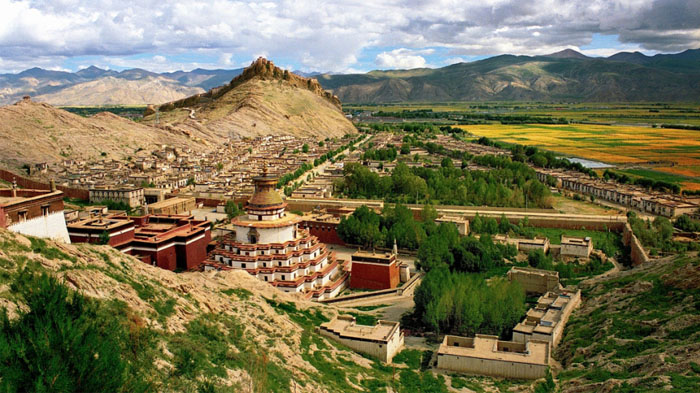
Gyantse Pelkor Chode Monastery.
Local Cuisine and Accommodation Nearby
When visiting the stunning Gyantse Pelkor Chode Monastery, immersing yourself in the local culture is a must—this includes savoring the unique flavors of Tibetan cuisine and finding comfortable lodging nearby. Here are some recommendations for both food and accommodation to enhance your experience.
Dining Options
- Gyantse Restaurant
-
Located just a short walk from the monastery, Gyantse Restaurant is a favorite among travelers. The menu features traditional Tibetan dishes such as momos (steamed dumplings) and thukpa (noodle soup). The cozy atmosphere and friendly staff make it a perfect spot to refuel after exploring the monastery.
-
The Kumbum Cafe
-
Situated near the Kumbum Stupa, this cafe offers a blend of Tibetan and Western cuisine. Enjoy a steaming cup of butter tea or a slice of homemade apple pie while you take in views of the stunning architecture surrounding you. The cafe is an ideal place to relax and reflect on your monastery visit.
-
Tashi Delek Restaurant
- A bit further into Gyantse, Tashi Delek serves an array of flavorful Tibetan and Chinese dishes. Their yak steak is a must-try, and the restaurant’s warm ambiance makes it a great place for a hearty meal. Be sure to sample their local barley beer, a refreshing drink that pairs well with any meal.
Accommodation Options
- Gyantse Hotel
-
This hotel offers comfortable rooms with stunning views of the surrounding mountains. Located conveniently close to the monastery, it provides a peaceful retreat after a day of exploration. The hotel also features a restaurant that serves both local and international dishes, ensuring you have a satisfying dining experience without venturing too far.
-
Pala Manor Hotel
-
For a unique experience, stay at Pala Manor Hotel, which is styled after the historic Pala Manor. This charming accommodation offers a blend of traditional Tibetan architecture and modern amenities. The hotel’s location is perfect for those looking to delve deeper into Gyantse’s rich history, as it is near both the monastery and other historical sites.
-
Tibetan Family Guesthouse
- If you’re seeking a more authentic experience, consider staying at the Tibetan Family Guesthouse. Run by a local family, this guesthouse allows you to experience Tibetan hospitality firsthand. You can enjoy simple yet delicious home-cooked meals and learn about local customs and traditions from your hosts.
Final Thoughts
Whether you choose to indulge in the delectable local cuisine or find solace in one of the comfortable accommodations nearby, your visit to Gyantse Pelkor Chode Monastery promises to be enriched by the vibrant culture and warm hospitality of Tibet. Each meal and each night spent in this enchanting region will surely leave a lasting impression on your journey.
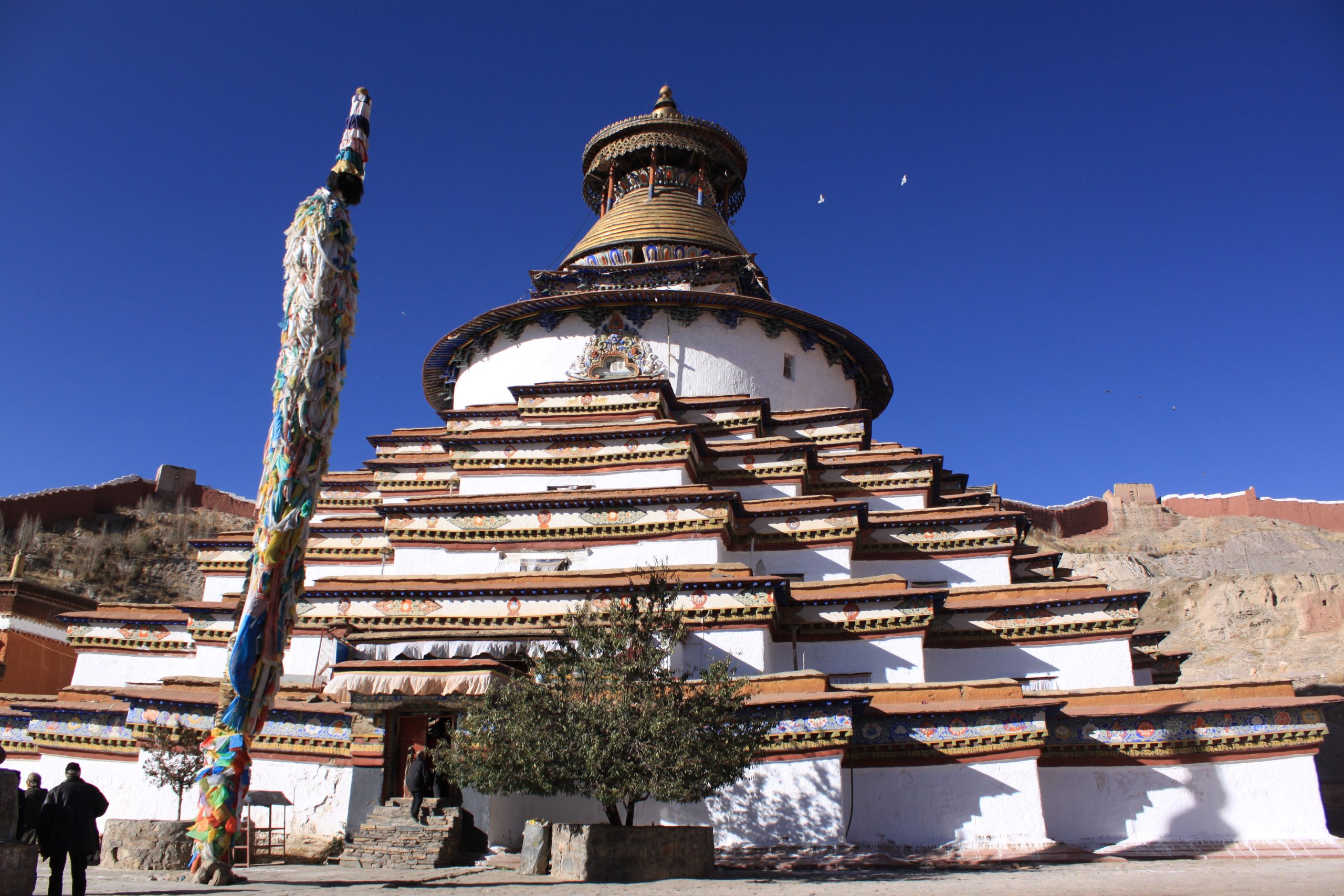
Gyantse Pelkor Chode Monastery.
Frequently Asked Questions
-
What are the opening hours for Pelkor Chode Monastery?
The monastery is typically open to visitors from 8:00 AM to 6:00 PM. However, it’s advisable to check locally for any changes, especially during festival times or local holidays. -
How do I get to Gyantse and the monastery?
Gyantse is approximately 100 kilometers southeast of Shigatse. You can reach Gyantse by taking a bus or hiring a taxi from Shigatse. Once in Gyantse, Pelkor Chode Monastery is within walking distance from the town center. -
Is there an entrance fee to visit the monastery?
Yes, there is a small entrance fee to visit Pelkor Chode Monastery, which helps with the maintenance of the site. Be sure to bring cash, as card payments might not be accepted. -
What should I wear when visiting the monastery?
Modest clothing is recommended when visiting religious sites in Tibet. Make sure to cover your shoulders and knees out of respect for the local customs. Comfortable footwear is also advisable for exploring the monastery’s various levels. -
Are there guided tours available at Pelkor Chode Monastery?
Yes, guided tours are available and are highly recommended. They provide valuable insights into the history, architecture, and significance of the monastery. You can book a tour through local travel agencies or at your hotel. -
What is the best time of year to visit Pelkor Chode Monastery?
The best time to visit is during spring (April to June) and autumn (September to October) when the weather is mild and pleasant. Avoid the winter months if you are not accustomed to cold temperatures, as it can be quite harsh. -
Can I take photographs inside the monastery?
Photography policies can vary, so it is best to check for signs or ask local monks or staff. While exterior photography is generally allowed, interior photography may be restricted in certain chapels out of respect for the sacred environment. -
Are there accommodations nearby?
Yes, Gyantse offers various accommodation options, ranging from budget guesthouses to more comfortable hotels. Staying in Gyantse allows you to easily explore both Pelkor Chode Monastery and other local attractions, such as Gyantse Fort and Pala Manor.
Final Thoughts on Your Trip
As your journey through the enchanting landscapes of Tibet draws to a close, a visit to Pelkor Chode Monastery stands as a highlight that encapsulates the spiritual essence and rich history of this remarkable region. The Kumbum Stupa, with its intricate tiers and profound symbolism, invites you to reflect on the path to enlightenment, while the vibrant murals and sacred halls within the monastery tell tales of devotion that have spanned centuries.
Each corner of Pelkor Chode holds a piece of Tibetan history, from its harmonious blend of architectural styles to the serene presence of the monks who continue to uphold the teachings of Buddhism. The bustling streets of Gyantse, with their whispers of trade and tradition, serve as a fitting backdrop for this monastery’s timeless allure.
As you prepare to depart, take with you not only the stunning visuals and memories but also a deeper appreciation for the rich tapestry of cultures that weave through this land. The spirit of Tibet—resilient, peaceful, and profoundly spiritual—will remain with you long after you leave its sacred sites. Embrace the stories you’ve gathered and let them inspire your future adventures, wherever they may lead you next.